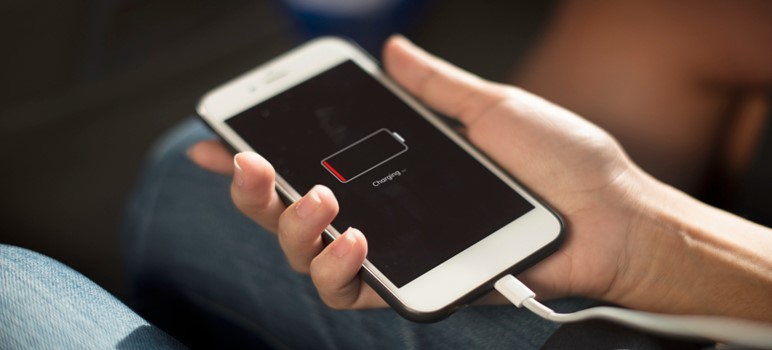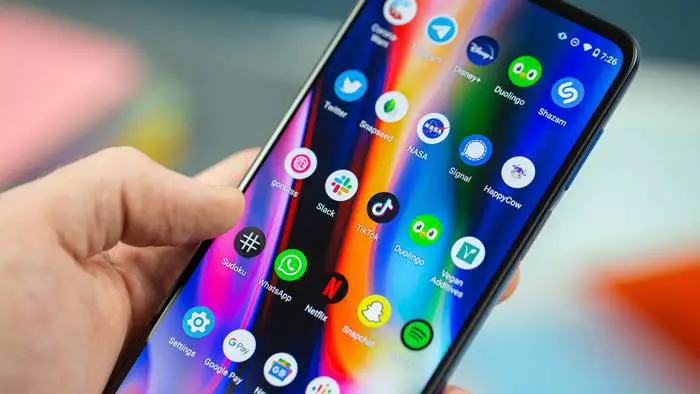I just scored a new Motorola Droid 3, and this time, I promised the smartphone and myself that I would take extra good care of the battery. I didn’t want my lovely new Droid to end up like the Samsung Gravity which it replaced… i.e., seemingly needing a charge every 15 minutes or so.

“I’ll only plug you in when your battery is almost dead,” I said lovingly. “And I’ll let you charge until your tummy is all full before I use you again.” And then I trotted off to read up on batteries and charging, patting myself on the back over how good of a parent smartphone owner I was.
Whoops. It would have been a great plan if the Droid 3 used nickel-cadmium batteries. But like most modern electronics (smartphones, laptops, tablets, netbooks, etc.), the Droid uses lithium-Ion batteries. And they have very different rules.
Read also: How To Take Care Of Your Laptop Battery
The following tips are designed to give you the best possible results for the longest possible time, but your battery will die someday. And by “someday,” I mean you’ll be lucky if you get more than two or three years out of it (I’m so sorry). Even with the best tender loving care in the world, you’ll watch your battery get weaker and weaker all the time, and chances are you’ll notice shorter battery life after the first six months or so.
Read also: How Much Have Batteries Improved Over Time?
The good news: these tips can slow the loss to a minimum, and potentially add an extra year or two to your battery’s life, which, given the rapid pace of technological advancement, is probably as much time as you’ll want to spend with your laptop or smartphone.
How to protect your gadget’s Lithium-Ion battery life
- The old NiCad batteries had a “memory” problem which trained us all to think that charging a half-full battery was the worst possible thing to do. Lithium-ion batteries are exactly the opposite. Any kind of charging will slightly decrease the battery life, but charging it when it hits 50% will hurt the least.
- A good rule of thumb is known as the “40/80” rule. In other words, the ideal time to plug in your charger is when your phone gets around 40%, and the ideal time to take it off the charger is around 80%.
- Don’t get obsessive about it. Letting your battery drop to 20 – 30% isn’t cause for panic, nor is letting it charge to 90 – 100%. You’ll shorten the life of your battery a tiny bit more by doing it that way, but not by enough to worry about.
- Letting your phone discharge completely, or leaving it on the charger too long after it reaches 100%, will take its toll on the battery life if you do it often enough.
- Your battery won’t hate you if you plug your phone in before bed and it has to sit at 100% for a few hours until you get up in the morning. You definitely don’t want to leave it on the charger for days, though… and if you’re really worried about this, there are “smart” chargers that stop when you hit 100% (in addition to helping your battery life, this also helps your electric bill and the environment!).
- Some experts recommend you let your phone run all the way down about once a month, just to update the memory regarding what “full” and “empty” really mean. If you stay on the “40/80” rule for too long, you might start to see “5% or less – charge battery now” messages when you’re really at 45% or so (or ‘fully charged’ readings at 75%). Once a month, think like an old NiCad owner and recalibrate the battery by running it down and then charging fully. As far as battery life goes, you’ll probably end up with a net gain because you’ll have a far more accurate idea of where “40/80” really is.
Pro Tip: Enhance your phone’s battery life by switching to grayscale mode or setting the display to black and white.
How to protect and extend your gadget’s Lithium-Ion battery life: Conclusion
While lithium-ion batteries have different rules compared to older battery types, there are still ways to protect and extend their lifespan. Following the “40/80” rule, which suggests charging your device around 40% and removing it from the charger at around 80%, can minimize the impact on battery life.
Avoiding complete discharges and prolonged charging after reaching 100% is also advisable. Additionally, occasionally allowing the battery to run down completely and then fully charging it can recalibrate its memory.
By implementing these practices, you can significantly slow down the battery degradation and enjoy extended battery life for your gadgets.
Read also: Phone won’t charge? Common reasons and solutions
Do you follow the 40/80 rule? Any tips on how to protect and extend gadget’s battery life? Share your thoughts here.




Hey This is one of the post which is very unique. I have read hell lot of topic s about the gadgets but didn’t see the post which teaches the way to extend the battery life which is the most important part of electronic gadgets.
Yeah a great piece of writing from Greg. Thanks for passing by Puneet.
Thanks Puneet! I learned a lot while researching this post. Turns out I was doing most everything wrong and it was costing me my gadgets’ longevity.
–Greg
For me, my phone’s battery only can last for just a few years. Thanks for the tips, I should change my habit.
If you start to practise Greg’s tips here, your phone’s battery would probably last even more ‘few years’. Nice to hear from you Tan 🙂
In fact, my handphone normally can last for 5-6 years, but with 2 replacement batteries.
Interesting, but I don’t think I could ever remember to remove my phone from my charger until the next morning.
Well you might need a smart charger then Scott 🙂
This is a super helpful post! I knew that these batteries work different than the old nickel cadmium batteries but I did not know that keeping the charger on when it’s full is a bad thing. That does explain why my phone says “Battery is ful, remove the recharger” or something to that extend. I always used to keep it plugged in as long as possible until I have to leave, so I would leave the house with a 100% full battery. I did not know this is bad. Thanks a lot for the tips!
Who can remember to unplug the charger right? After reading Greg’s post, I got myself a “smart” charger, now I don’t have to worry about unplugging it when it’s fully charged 😛 Thanks for the comment Danny.
hi greg…
today many persons are having a smartphone, laptops, notebooks and other gadgets…for their daily use…
and the factor which affects the usability is the battery…so battery is the most important part of a gadget…and its irritating to charge your battery every time…so a useful and quality post for all of us..that how to increase battery life of a gadget…awesome post
~I’ve seen some phone apps that claim to manage battery life, I guess this must be how they work?
Yea it could be Ewan!